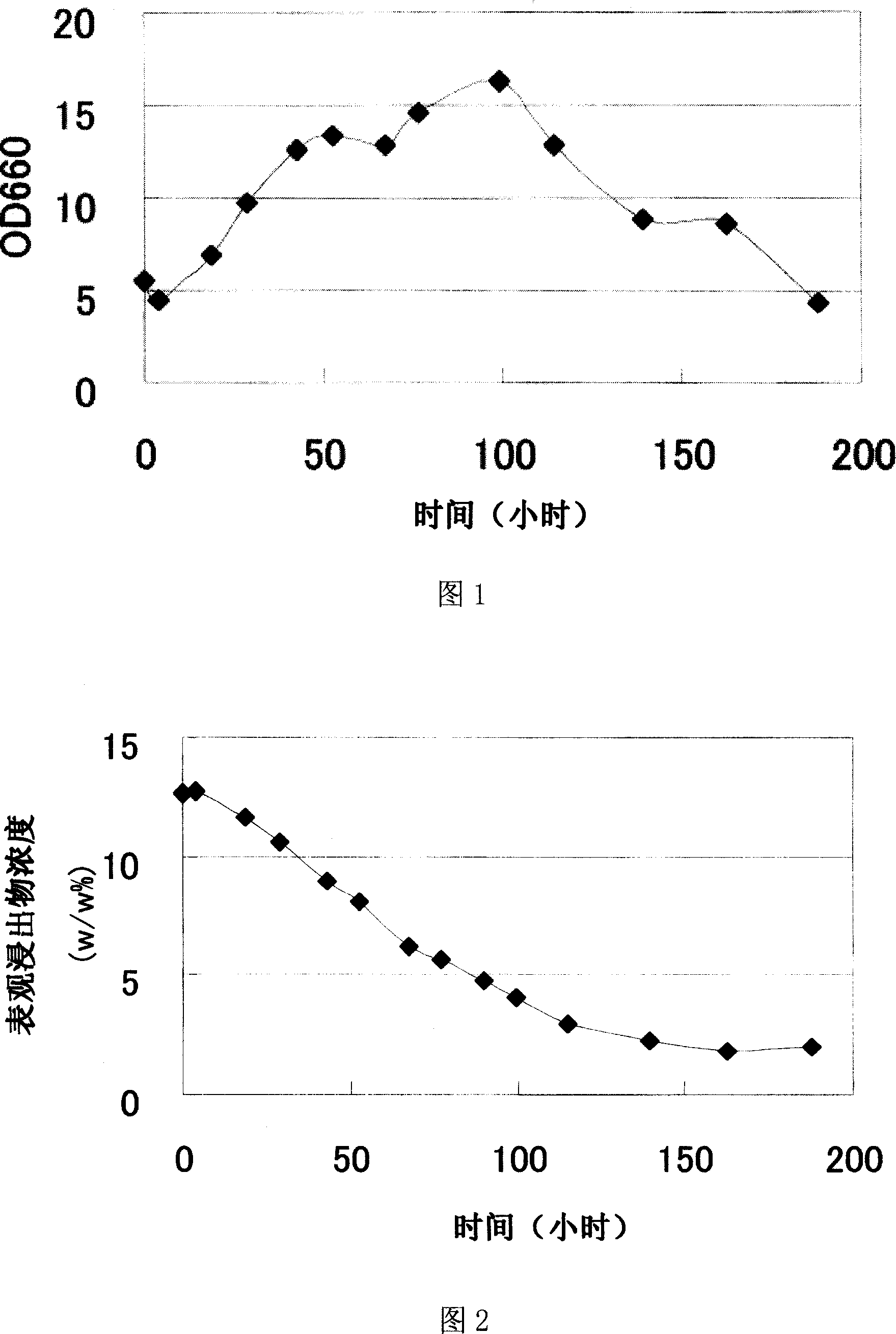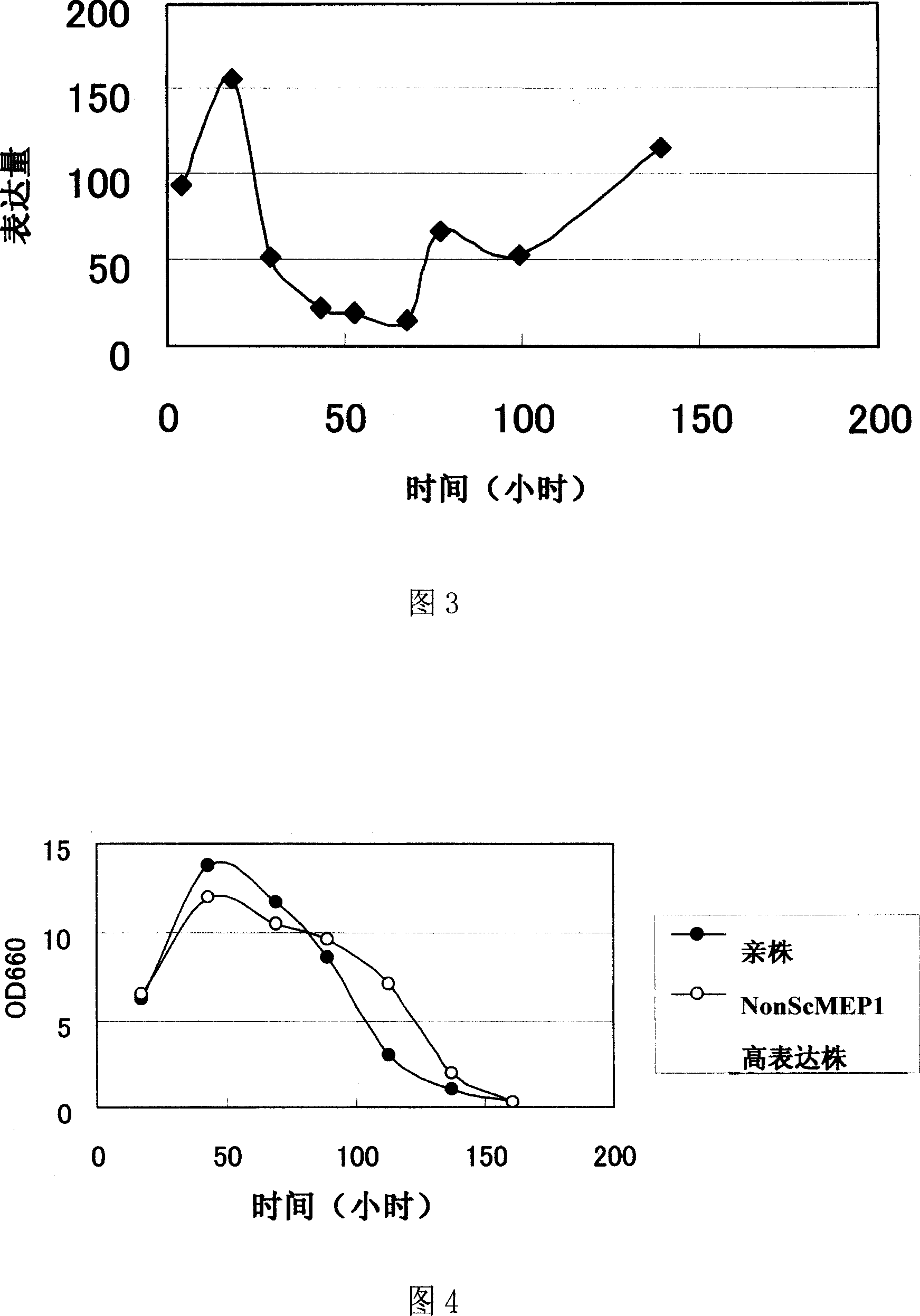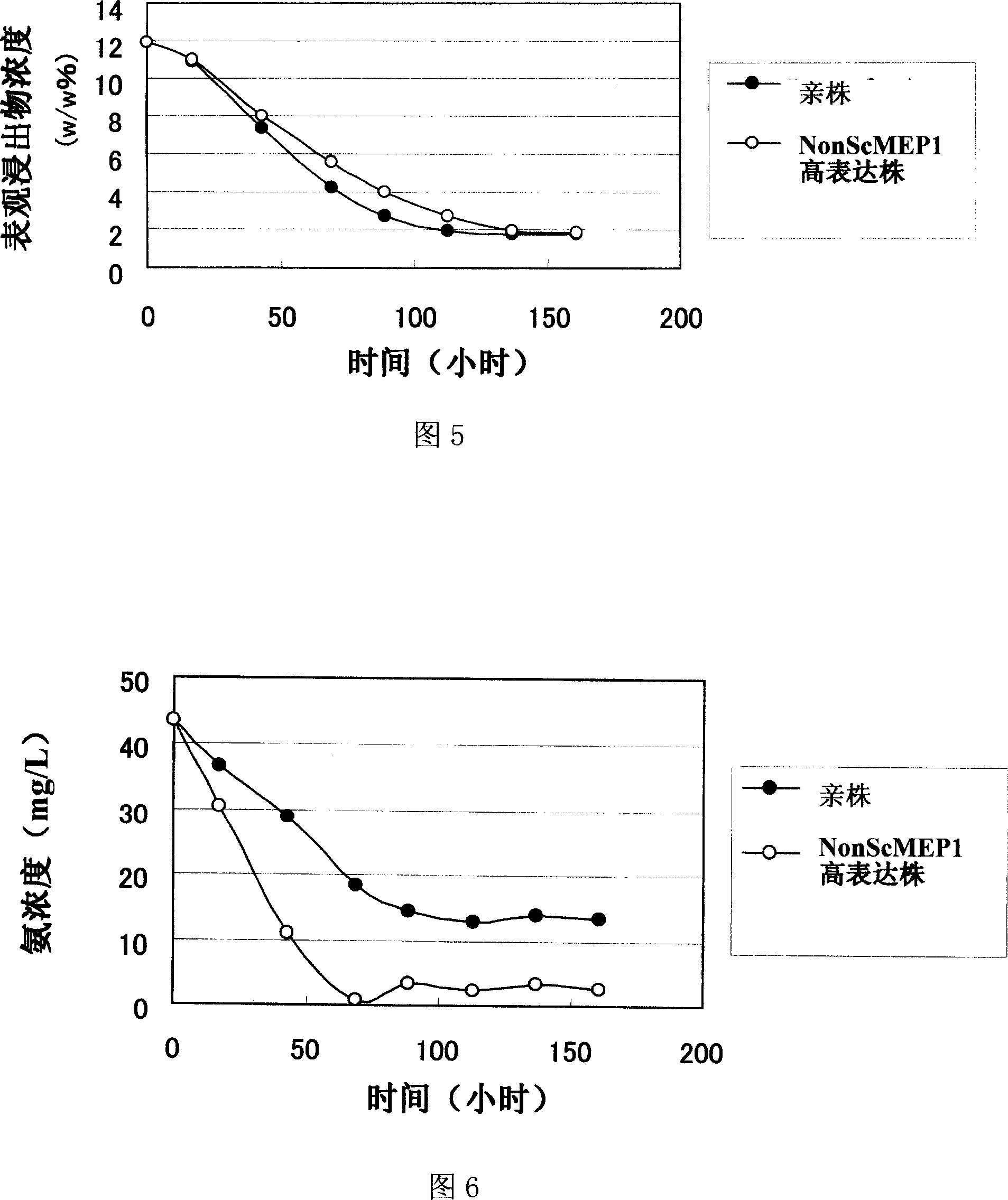Ammonia transporter gene and use thereof
A transporter and gene technology, applied in the field of ammonia transporter gene and its application, can solve problems such as difficulty in amino acid content
- Summary
- Abstract
- Description
- Claims
- Application Information
AI Technical Summary
Problems solved by technology
Method used
Image
Examples
Embodiment 1
[0132] Example 1: Cloning of Ammonia Transporter (nonScMEP1)
[0133] As a result of searching using the comparative database described in Japanese Patent Application Laid-Open No. 2004-283169, nonScMEP1 (sequence number 1), an ammonia transporter gene unique to S. cerevisiae, was found. According to the base sequence information obtained, the primers nonScMEP1_F (sequence number 5) / nonScMEP1_R (sequence number 6) used to amplify the full-length gene were designed respectively, and the strain Saccharomyces pastorianus Weihenstepan34 / 70 strain (abbreviated as "W34 / 70 strain) ”) of chromosomal DNA as a template to obtain a DNA fragment including the full-length gene of nonScMEP1.
[0134] The nonScMEP1 gene fragment obtained above was inserted into pCR2.1-TOPO vector (manufactured by Invitrogen) by TA cloning. The base sequence of the nonScMEP1 gene was analyzed and determined by the Sanger method (F. Sanger, Science, 214:1215, 1981).
Embodiment 2
[0135] Example 2: Analysis of nonScMEP1 gene expression in beer brewing
[0136] Brewery yeast Saccharomyces pastorianus W34 / 70 strain was used for trial brewing, and mRNA extracted from brewer's yeast cell during fermentation was analyzed by brewer's yeast DNA microarray.
[0137] Wort extract concentration 12.69%
[0138] Wort volume 70L
[0139] Dissolved oxygen concentration in wort 8.6ppm
[0140] Fermentation temperature 15°C
[0141] The amount of yeast added 12.8×10 6 cells / mL
[0142] The fermented liquid was sampled over time, and the changes over time in the amount of yeast proliferation (Fig. 1) and apparent extract concentration (Fig. 2) were observed. At the same time, the yeast cells were sampled, the prepared mRNA was labeled with biotin, and hybridized with the brewer's yeast DNA microarray described in Japanese Patent Laid-Open No. 2004-283169. Signal detection was performed with GeneChip Operating System (GCOS; GeneChip Operating Software 1.0, manufa...
Embodiment 3
[0143] Example 3: Construction of nonScMEP1 high expression strain
[0144] The nonScMEP1 / pCR2.1-TOPO described in Example 1 was digested with restriction endonucleases SacI and NotI to prepare a DNA fragment including the full length of the protein coding region. The fragment was ligated to pYCGPYNot treated with restriction enzymes SacI and NotI, thereby constructing nonScMEP1 high-expression vector nonScMEP1 / pYCGPYNot. pYCGPYNot is a YCp-type yeast expression vector, and the introduced gene is highly expressed through the promoter of pyruvate kinase gene PYK1. Yeast selectable markers include the aminoglycoside antibiotic (Geneticin) resistance gene G418 r , selectable markers for E. coli include the ampicillin resistance gene Amp r .
[0145]Using the high expression vector prepared by the above method, the Saccharomyces pasteurianus Weihenstepan34 / 70 strain was transformed by the method described in Japanese Patent Laid-Open No. 07-303475. Transformants were selecte...
PUM
 Login to View More
Login to View More Abstract
Description
Claims
Application Information
 Login to View More
Login to View More - R&D
- Intellectual Property
- Life Sciences
- Materials
- Tech Scout
- Unparalleled Data Quality
- Higher Quality Content
- 60% Fewer Hallucinations
Browse by: Latest US Patents, China's latest patents, Technical Efficacy Thesaurus, Application Domain, Technology Topic, Popular Technical Reports.
© 2025 PatSnap. All rights reserved.Legal|Privacy policy|Modern Slavery Act Transparency Statement|Sitemap|About US| Contact US: help@patsnap.com



